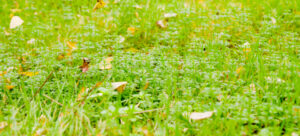Stephania Erecta: Complete Guide on the Elephant Foot Plant
The Stephania erecta, also known as Elephant Foot Plant, is a tuberous plant from Thailand that can be identified by a large, woody bulb known as a caudex. The caudex will sprout multiple tall, slender, straight stalks as it grows.
Over the past few years the Stephania Erecta plant has exploded in popularity. This trendy plant resembles a potato or an elephant’s foot, before sprouting its beautiful stocks & leaves.
The straight stalks give way to the “Erecta” part of the name. The stalks are topped by circle-shaped green leaves with an almost mosaic pattern. People will form the stocks/leaves into fun shapes as it grows. This is possible because the stock will climb similar to vine plants.
This plant grows during spring and summer and loves high humidity. In wintertime, it drops its leaves and goes dormant. The plant will stay dormant until it gets warmer and starts to sprout its pretty leaves again. This is how they are usually sold in stores, as a dormant plant.
Due to the difficulty some have getting the seeds to sprout, a lot of plants found in stores are pulled from their natural environment. These can take up to 20 years to mature and that is a commitment not everyone wants. Fortunately, as the plant grows it gets way easier to look after and way better looking!
Let’s learn how to sprout this wonderful plant from seed or dormancy, and dive into Stephania Erecta care!
Sprouting Stephania Erecta From Seed:
Starting from seed can be difficult, but extremely rewarding!
- First soak your seeds for 24 hours in a warm, dark place.
- Choose a small pot or container. When choosing a container, make sure there are proper drainage holes!
- Sew your seeds into a small container ¼” deep, using succulent mix. You’ll want to use the same type of soil the plant will live as an adult. Make sure to water the seed after sewing.
- Cover the top of your container with a plastic bag, or anything to maintain the high humidity environment.
- Keep your plant in indirect light, ensuring the plant stays at atleast 64 degrees F during the germination phase.
- After about 2 weeks the seeds will start to germinate! Once your plant gets it’s second leaf, make sure to remove the humidity cover.
- After about 4-5 weeks after sewing, your plant will start to take on the characteristics of the Stephania erecta. At least the leaves and stalk.
- The base of the Elephant Foot Plant will start to form after about 2-3 months. Watch your elephant foot take huge steps!
How to Sprout Stephania Erecta From Dormancy
The caudex is usually sold when it is dormant. You’ll need to sprout it once you get it home and want to start growing.
- Soak the Stephania Erecta caudex for 24 hours in warm water in a dark space. This starts the wake up process for your plant.
- While the bulb is soaking, prep your pot or container and potting soil.
a.) For the container, the most important thing is that it has proper drainage and sufficient area to take root and grow.
b.) When choosing a soil, make sure you use a succulent oriented potting mix.
- After the soak, place the caudex with the node facing up in the soil mixture. Fill in with potting soil, making sure not to cover the node.
- Give a thorough watering to your new plant, and move to a warm (above 64 degrees F) high humidity environment.You can also create a proper environment in a grow tent at a fraction of the space. Germination domes are also great and perfect for space savers and newer hobbyists. You can even use a plastic bag as a germination dome in a pinch!\
- Keep the soil most until new growth appears.
- Once you see new growth you can remove the plant from the grow tent or the germination dome from the pot!
How Long Does It Take for Stephania Erecta to Grow?
Remember, this plant grows very slowly.
It can take up to twenty years to reach maturity before you have a true “Elephant Foot Plant”, but you’ll have a pretty awesome potato with beautiful stocks and leaves in the meantime!
Stephania Erecta Care
Some consider this plant to be somewhat difficult to grow and care for. Let’s get into how to give your plant the best chance you can.
Watering
Once you’re past the sprouting stage, whether it be from seed or dormancy, you’ll want to taper down the watering. You’ll only need to water once a week! Allow the soil to start to dry between waterings, ensuring the roots remain healthy. This also helps the soil to not develop fungus or disease.
When you water, it is best to water with lukewarm water in a sink or somewhere separate from the saucer it lives in. Water until you see water coming out of the drainage holes. Let the plant sit for 10-15 minutes and then place back where it lives.
Water Issues
Dry, brittle leaves usually indicate underwatering. If the plant is under watered, especially while a leafless caudex, it can severely stunt growth.
Over watering can usually show signs as wilting or yellow leaves. Over watering can cause root rot, even worse the caudex could rot and kill the plant entirely.
Stephania Erecta & The Sun
Your plant needs indirect sunlight for 4-6 hours. Direct sunlight can potentially burn the leaves or even the bulb. Burning the bulb will kill the plant, and burning the leaves could lead to stunted growth or even death of the plant if it’s bad enough!
Temperature
Stephania erecta is happiest in temperatures between 60 to 80 degrees F. Luckily this is the range most people keep their homes, so temperature regulation should be easy.
Make sure that the plant does not get too hot in the summer. Indirect sunlight can even be too intense in really hot places. This could lead to an unhappy plant.
Humidity
Stephania erecta is from high humidity areas. The humidity should stay around 60%, higher than most homes.
You can easily make a humid microclimate with pebbles and a saucer. Here’s how!
- Find a larger, deeper saucer than what your plant is in.
- Fill the larger saucer with a layer of pebbles, followed by water until it’s just below the tops of the pebbles.
- Place the original pot and saucer the plant is in on top of the pebble filled saucer.
- Refill the water in the pebble saucer as needed.
- Water will evaporate, increasing the humidity around the plant.
You can also spray the leaves with water. Make sure to spray in the morning so the leaves are dry by night. Wet leaves can lead to all sorts of problems.
Fertilizing Stephania Erecta
Feed every 4 to 6 weeks during the warmer months of spring and summer. That’s when it’s going to be growing the most. Substitute a week of watering with a feeding, and resume normal watering.
In the fall when it starts getting colder and your plant starts to lose leaves, start to wean feeding. Do not fertilize your plant during winter while or any time your plant is dormant.
Dormancy Period
During winter, it’s normal for your plant’s leaves to turn brown and drop. The Stephania Erecta actually hibernates! The leaves will drop so your plant can store as much energy as possible during the winter.
If kept in a proper environment it may not go dormant or dormant for long. Doing so is perfectly normal though!
Remember to reduce watering during dormancy as you don’t want it to rot. It should be able to sustain itself on the nutrients and water it’s stored for itself until Spring. You’ll only need to water every 2-3 weeks at most.
Once Spring arrives, you can begin watering as normal! Your plant will grow bigger and prettier each Spring!
Have questions about your grow? We're Here To Help!
Our Northern California based experts can help. We're here to make sure you get what you need to maximize your harvest.





